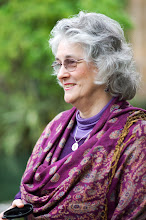From Oxford University Press' New & Noteworthy Titles in Religion:
Ancient Religions:
- Magic, Witchcraft and Ghosts in the Greek and Roman World: A Sourcebook, edited by Daniel Ogden, Univ. of Exeter. In a culture where the supernatural possessed more immediacy than ours, magic was important. This book presents 300 texts (curse tablets, spells from ancient recipe books, inscriptions from magical amulets) in new translations, with brief commentaries. What fun!
- Fasti Sacerdotum: A Prosopography of Pagan, Jewish, and Christian Religious Officials in the City of Rome, 300 BC [sic] to AD [sic] 499, Jörge Rüpke, Univ. of Erfurt, and David Richardson, Institute of Linguists. Documentary sources for Greek, Roman, Oriental, Jewish and Christian cults, listing religious office-holders of various kinds, 4,000 bios of those who fulfilled ritual, organization or doctrinal roles. Discusses religion's relationship with the state, interplay of religions, etc. This seems useful to Pagans as our religions and movement unfold and develop, as well as to those active in interfaith communities. Whoo! A whopping $320!
- The Arabic Hermes: From Pagan Sage to Prophet of Science, by Kevin Van Bladel, Univ. of Southern California. The first major study of the early Arabic reception and adaptation of Hermes Trismegistus. I know Don Frew and Sam Webster are gonna want this one. I'm tempted to buy it myself, but will probably end up borrowing it. $60.
- Traversing Eternity: Texts for the Afterlife from Ptolemaic and Roman Egypt, by Mark Smith, Oxford Univ. The title says it all. Based on, and with translations of, 60 texts. Yikes! $200.
- What I Believe, by Tariq Ramadan, Oxford Univ. A controversial figure, Ramadan was refused entry into the U.S. by the Bush administration in 2004. With support from the AAR and the ACLU, the ban was lifted. He speaks from a pluralistic perspective, urging Western Muslims to escape the mental, social, cultural and religious ghettos they've created to become full partners in democratic societies, while urging non-Muslims to recognize them as having the same rights and responsibilities as everyone else. Helpful to those of us working in the interfaith movement. Only 13 bucks.
- A Priest's Guide for the Great Festival: Aghorasiva's Mahotsavavidhi, by Richard H. Davis, Bard College. About nine-day "great festival" for the god Siva, based on 12th Century Sanskrit text. Contextualizes contemporary practices and South Indian temple festivals and processions. I'm sure it's full of ideas that can inform our development as a Pagan culture. Not bad -- $60.
- Debi Chaudhurani, or The Wife Who Came Home, by Bankimcandra Chatterji, translated and with a critical introduction by Julius J. Lipner. The second trilogy of works by the famed Bengali novelist Bankimcandra Chatterji (1838-94) features a protagonist who transforms from rejected wife to bandit queen to goddess figure to India herself, showing caste and gender politics. As a long-time feminist longing to visit Calcutta, home of Kali Ma's cult(s), I find this appealing. Only $32.
- The Final Word: The Caitanya Caritamrita and the Grammar of Religions Traditon, by Tony K. Stewart, North Carolina State Univ. Explains a Bengali cult devoted to a historical figure, Krishna Caitanya (1486-1533 CE), believed to be an incarnation of Krishna and Radha fused into a single androgynous form. The cult originated in Caitanya lifetime yet continues, with no named successor, no central leadership, no institutional authority, and no geographic center. Minus the avatar, how similar does this sound to many Pagan religions today? $60.
- Was Hinduism Invented? Britons, Indians, and the Colonial Construction of Religion, by Brian K. Pennington, Marysville College, Tennessee. "Drawing on a large body of previously untapped literature, including documents from the Church Missionary Society and Bengali newspapers, ... a fascinating portrait of the process by which 'Hinduism' came into being." This would seem to offer insights into the current phenomena of Pagan cultures. Only $27.





